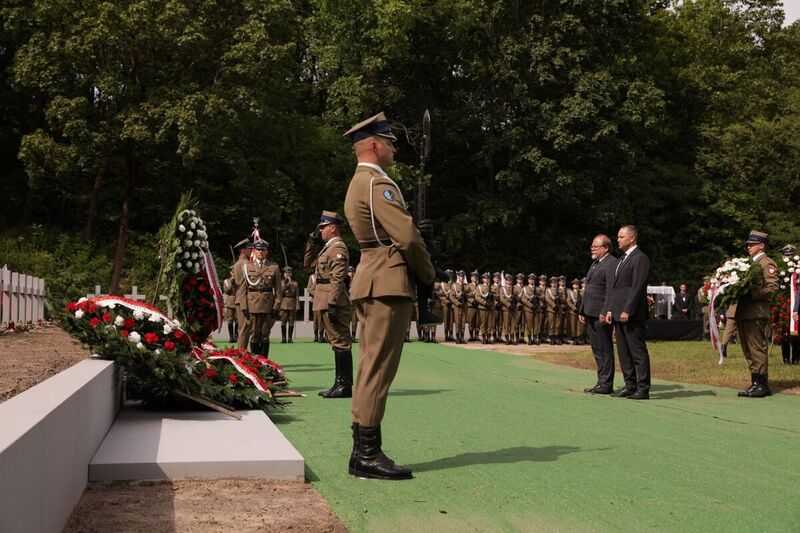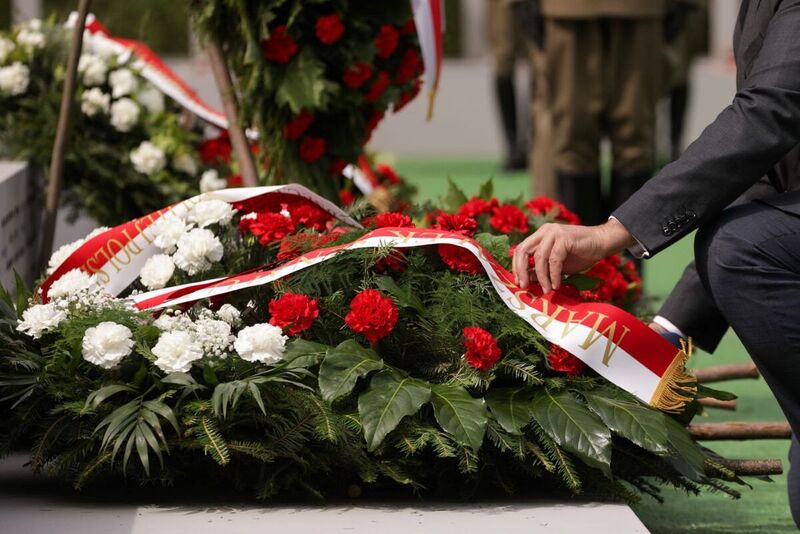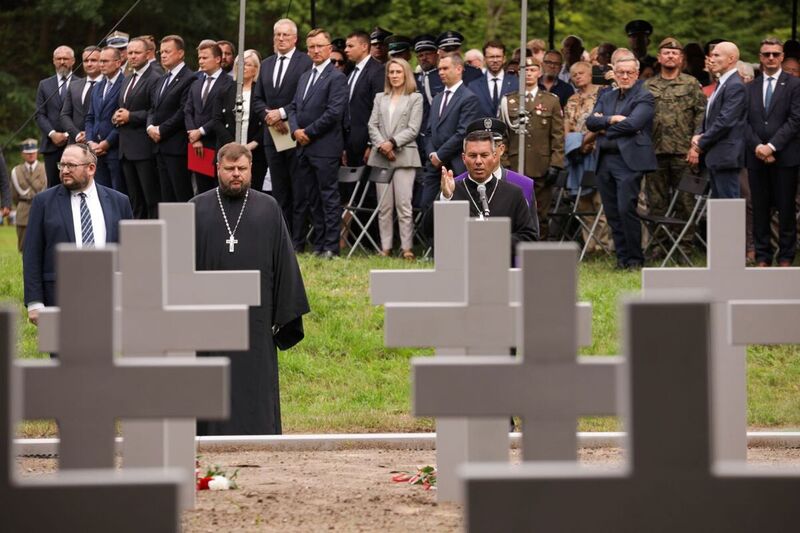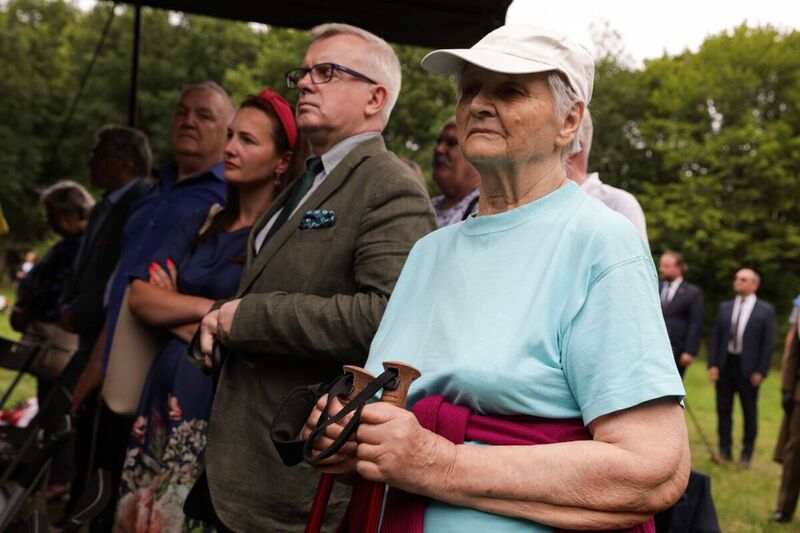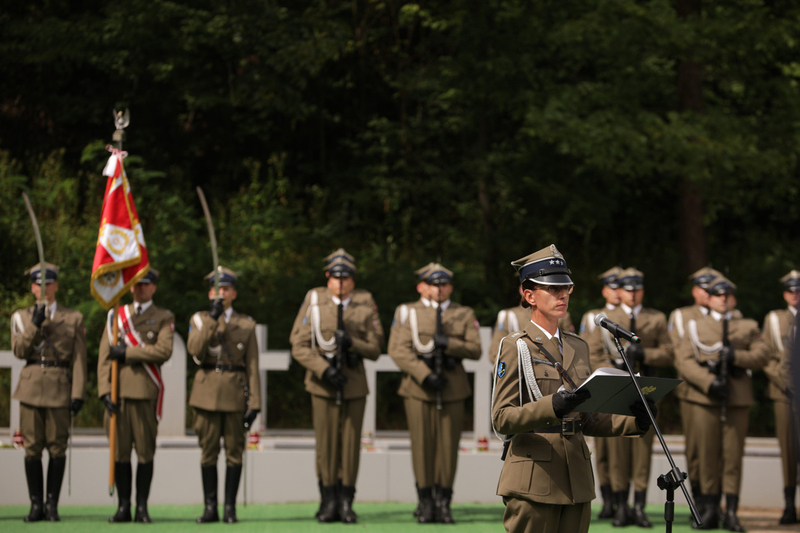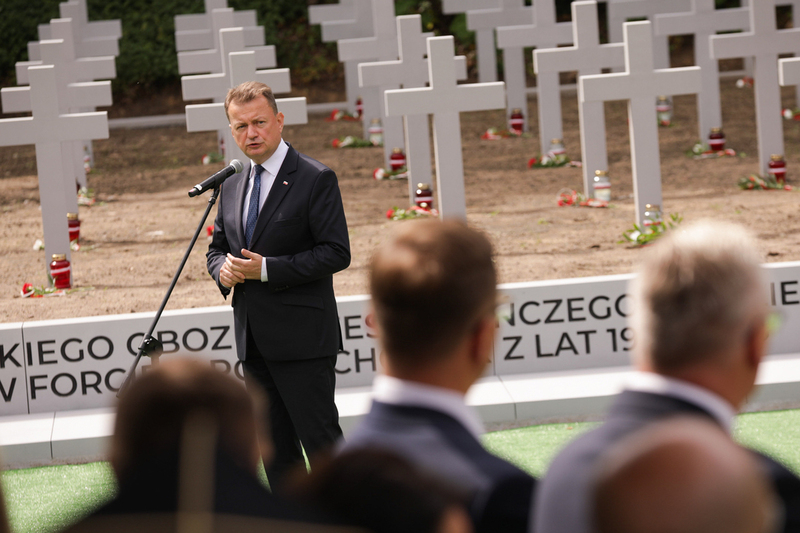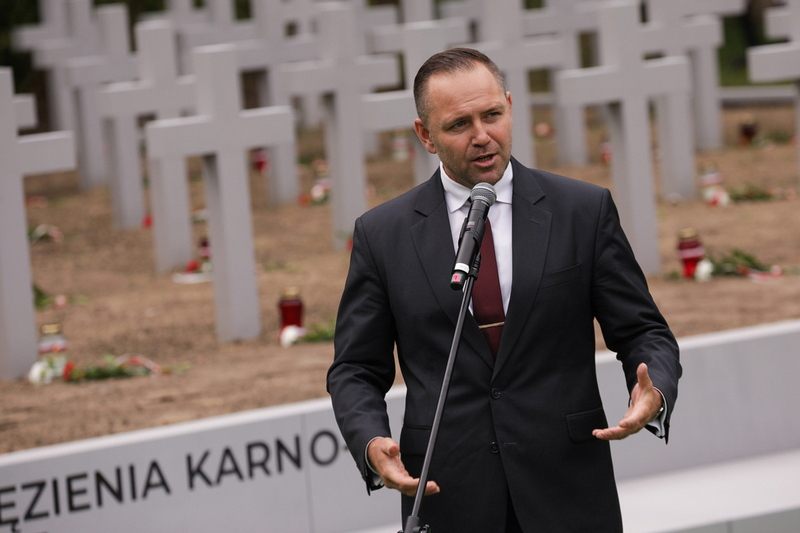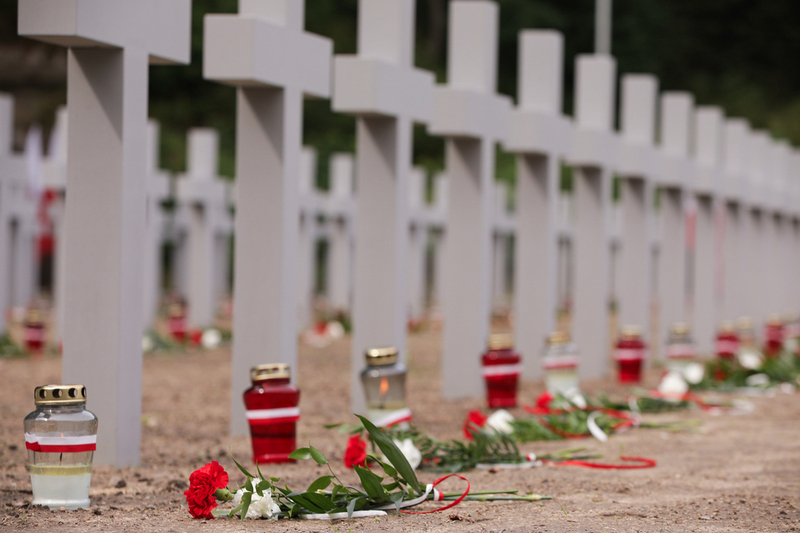On 30 July 1944, the biggest mass murder took place in Fort III in Pomiechówek in occupied Poland. 281 people, soldiers of the underground resistance, lost their lives. The IPN’s Office for Commemorating the Struggle and Martyrdom began in 2018 efforts to ensure a respectable burial to all the victims and commemorate them. Since then, remains of over 200 people were found.
This year, the commemoration of the 79th anniversary of the massacre took place on the premises of the former camp and prison. Their central point was the opening and consecration of the cemetery funded by the IPN where the remains of the victims were buried. A solemn mass was held and commemorative speeches were delivered.
The event was attended by the IPN President Karol Nawrocki who briefly introduced the audience to the history of Fort III and expressed his gratitude to those who preserved the memory of this place.
The history of the Fort in Pomiechówek - although it was built in the 1880s - is mainly associated with the period of WW2. In the years 1941-1945 Fort III in Pomiechówek served as a transit camp for the population of northern Mazovia, intended for deportation to the General Government. The conditions in the camp were very difficult - whole families slept on the concrete floor, had nothing to cover themselves with, received little food, and, because of poor sanitary conditions, suffered from several illnesses. The guards treated the prisoners with cruelty, especially the Jews.
In June 1941, the Germans deported most of the men for forced labor in the Reich, and the Jews to the camp in Działdowo. The rest were released, but forbidden to return to their homes. In the summer of 1941, more Jews were brought, transferred here from overcrowded ghettos of northern Mazovia. Cruelty and hunger in the camp increased, and death became a normal element of everyday existence.
When the Jews were again deported from the camp, it was transformed into a penal and investigative detention centre. That’s when the worst period in the history of Fort III began for all people detained here – members of the underground resistance, local farmers suspected of collaborating with partisans, Jews escaped from the ghettos and hiding in the forests, and finally – for Soviet POWs and German deserters. The prisoners died of torture, beatings, hunger and abuse. According to a witness, Władysław Grylak, imprisoned there from May to November 1943, on average 30-40 people were murdered each day. That's how he recalled that time:
“I can briefly describe the camp in Pomiechówek as one of the largest torture centres and the most hideous crime scene that existed in the Third Reich and the areas occupied by the German army, and I mean it. During the occupation I went through 5 Nazi camps – in Pomiechówek, Oświęcim, Mauthausen, one in Yugoslavia, and Neumark. The torture facility in Pomiechówek was the worst in every respect. The German fascists abused the prisoners in the most degrading way. The prisoners were murdered on a mass scale, for no reason at all, in particularly sophisticated and degenerate ways.”
